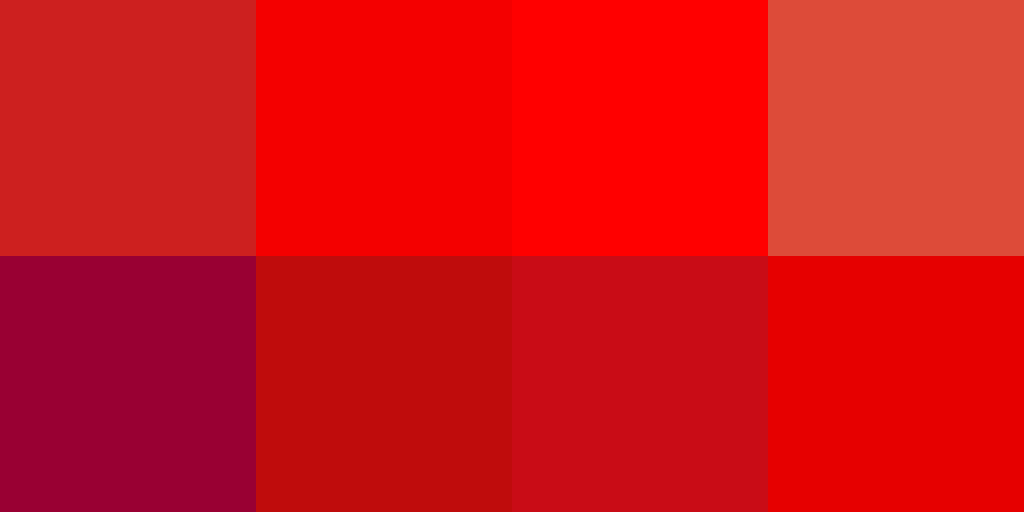Global Branding: What Colors Mean Around The World
Colors are important. They evoke moods and create mindsets, not to mention energies. This is why, as a brand it’s important that you know what colors mean. And that you carefully pick the colors that you use in your branding and marketing.

They will define and shape the messages you share with your customers. And considering how brands have increasingly diverse audiences, around the world, these days it’s important that you know what colors mean around the world. Something that seems universally understood to you could mean something completely different in another culture. This is also why you should know as much as possible about your audience demographic.
Whether it is print or digital creatives, or illustrations that you’re working on, understanding the associations between colors and their different meanings is crucial. This can be tricky, especially because of the broad scope that they can each have based on different cultures. But taking the time to understand them will pay off when you use them in everything from your imagery to your logos to your text.
In this blog, we are going to be taking a look at the significance of certain commonly used colors according to different cultures and what they mean, as well as the kind of emotions they evoke.
Red
There are three popular shades of red that can be found in branding and marketing:
- Crimson – this is a strong and bright red which is deep in hue and is usually combined with blue and violet.
- Maroon – this is dark red with brown mixed in and the name is derived from the French word marron which means chestnut.
- Vermillion – this is a brilliant and scarlet pigment of red and that was originally made from the powdered mineral cinnabar.
A color that evokes emotions
Most dictionaries will refer to the color red by using the terms fire or blood. Because of the fact that this color represents both heat and heart, it is known to evoke strong emotions whether they are positive or negative. It is also a color that is considered to elicit immediate actions, globally.
This is why it is also used as the color for stop in traffic lights universally. In Western cultures, red also depicts excitement and passion, love and danger. It is a color that is powerful and sexy. And so it’s common to see it used in iconic ways such as on the red carpet, rolled out for A list celebrities at prestigious ceremonies.
All things auspicious
In the case of China, red is a color that speaks of happiness and good fortune, prosperity and luck. Because the color is so auspicious, Chinese nationals wear red for special occasions like the New Year. In weddings, the bride usually dons red and even during holidays and other special occasions, any gift envelopes that contain money are red colored. In East Asia, the red color signifies an increase in stock prices and in North America it signifies a fall in the stock prices. The Japanese flag is also a white rectangle with a single red circle in the center, which is perhaps why most Japanese kids draw the sun as a big red circle.
Red can be religious too
In Latin America and Mexico, along with several other Latin American countries, red is seen as a color that speaks of religion when it is used in combination with white. According to Thai tradition, each day of the week is assigned a specific color and is also linked with a God. Red is for Sundays and is associated with Surya – the God of the Sun who was said to have been born on this day. In India, red is seen as being auspicious with brides being adorned in red from head to toe and having even their hands and feet colored red with mehendi for weddings.
…And sometimes not so auspicious
In the West, the color red does carry some negative connotations. For example the use of the word ‘caught red handed’ and ‘red flag’ can be thought of. In South Africa, red is all about mourning. The red color in the country’s flag speaks of the bloodshed – both sacrificial and violent – as the country fought for independence.
Orange
Some of the most popular shades of orange include:
- Coral – which is a vivid reddish-orange that reminds one of sea coral.
- Peach – a shade of orange that looks more like a pale yellow and is similar to the color of the fruit.
- Salmon – a pinkish orange like the flesh of the salmon fish.
The color with the most visibility
Orange is the color that is the easiest to see, even in the dimmest light. So it is no surprise that most rafts, life jackets and buoys are all colored ‘safety orange.’ In the US, detour signs and the vests of highway or construction workers are colored orange to maximize visibility.
Fall reminder
In the Western world, orange is associated with all things harvest and autumn. The color is immediately synonymous with carving pumpkins, autumn leaves falling and the warm glow of a candle. When it is paired with black, it represents Halloween, when the veil between the worlds is said to be at its thinnest. Some say that the colors were combined with a particular purpose. Orange – to show life and black – to show death.
It’s all about fun
Orange is also considered the color of frivolity and amusement in the West. Clowns are often seen sporting orange wigs. Mythological paintings such as the one of Bacchus – the god of wine-making, ritual madness, fertility and religious ecstasy, wears orange robes.
Religion and royalty
In South East Asian countries like Laos, Thailand, Myanmar and Cambodia, Buddhist Theravda monks wear saffron colored robes. While this color was chosen centuries ago because of the easy availability of the dye, the color has become a tradition since and is now seen as holy and sacred.
In the Netherlands, Oranjegekte (Orange Craze) is a phenomenon that takes place during sporting events and the annual holiday to celebrate the birthday of the King. It is also something that was done to celebrate the Dutch royal family – the House of Orange-Nassau.
Pump it up a notch
If you have ever been told to add more orange to your wardrobe, that is because the color is said to liven things up. It is associated with fun, being edgy, trying new things, creativity and curiosity.
Yellow
Reminiscent of sunshine, some of the popularly used shades of yellow are:
- Canary which is a bright yellow and is exactly the color of the plumage of the canary bird.
- Gold which is vivid yellow and can sometimes be metallic. It is associated with wealth.
- Lemon chiffon is a very light shade of yellow.
A color for attention
If you feel like you need to grab the attention of your customer, pick yellow. It is the most visible color on the spectrum and is also one of the first colors that the human eye tends to notice.
Colorful contradictions
In the United States, Canada and Europe, surveys have found that people associate yellow with spontaneity and gentleness. However some people also said that they associate it with greed and duplicity. In the US, people also see yellow as the color of cowardice (think ‘yellow-bellied’). Of course context is important, so be sure to when using yellow to ensure that your message, images and other elements reinforce the brand personality that you wish to represent.
Divinity in yellow
In Polynesia, yellow is a color that is sacred and is said to be the hue of the divine essence. The word for yellow is the same as the name for the curcuma longa plant, in local languages. And the plant is thought to be the food of the divine. In Christian lore, yellow and gold can be seen being used interchangeably. The color is said to symbolize faith and divine glory. This is why golden and yellow halos are often seen adorning religious paintings.
The color of heritage
In China, yellow also has very strong historical and cultural associations. The very first emperor of the nation was called the Yellow Emperor. And from 1279 onwards, only the emperor was allowed to wear the color yellow. Distinguished visitors to China are respected by rolling out a yellow carpet. There are exceptions however. For example, in present day Chinese pop culture, a yellow movie refers to cinema that is rated for adults. So be sure to look into context for your particular industry, and what colors mean within it, when choosing the colors you will use.
Green
Green has some very popular shades in it that are used in branding. Some of them are:
- Forest green which is vibrant and yellowish in nature. It resembles the colors of plants and trees in a forest.
- Lime is a color that is vivid and is yellow-green, just like the citrusy fruit.
- Olive is an earthy and dark shade that is rather subdued but is also very trendy right now.
It’s a go!
Green also means go and that is very clear with the green that you see in traffic signals. Even in the Hollywood film industry, the term greenlight indicates that whatever project is in question has been given approval. In the US immigration process a Green Card is what is given to people when they receive permission to stay permanently in the country.
Religiously green
Green is the traditional color of Islam and is associated with paradise in the Holy Qur’an. The holy text says that people in paradise are dressed in green and that they sit upon green cushions. It is also said to be the favorite color of the Prophet Muhammad and the color in which he was buried.
The color of magic
Ireland is also commonly known as the Emerald Isle because of the fact that its countryside is rather green, thanks to a lot of rain. In Irish as well as English folklore, green is always associated with magical beings like leprechauns who are commonly portrayed in green attire.
A natural color
In surveys done in North and South America as well as in Europe and in Islamic nations, green is seen as a color that has to do with nature, spring and good health. However, in the US the color is seen as a representation of poor health (remember the green emoji for being sick?). Even the term ‘ green around the gills’ is used to describe somebody who is sick. While we are not entirely sure how this came to be, it is thought to be associated with the discoloration of the skin that is visible when somebody is nauseated.
Blue
Blue is a color that probably has more meanings around the world than any other. Some of the popular shades of blue are:
- Cerulean which actually consists of a range of colors. These include teal, sky blue, azure and deep cyan.
- Indigo is a deep rich blue which is very close to the blue shade on the color wheel. It is named after an ancient dye of the same name.
- Periwinkle is a very light shade of purplish blue and is named after the flower.
In the blues
Blue is a color that has meanings from depression to royalty to trust. In the West, blue is often seen as a color that has to do with being melancholy. This is where the term ‘feeling the blues’ comes from. But at the same time, it is also a color that is said to be calming and soothing and builds trust. This is why many banks have blue in their logos. In many Middle Eastern countries, blue also represents safety and protection. It is also a symbol of heaven, spirituality and immortality.
Blue in religion
Ancient Egypt associated blue with the sky and divinity. It is said that their chief deity Amun would turn his skin blue, so that he could fly invisibly across the sky. In Hinduism Gods like Krishna, Shiva, Vishnu are all seen with blue colored skin. In the 12th century, both the Roman Catholic church and Catholicism insisted that artists paint the Virgin Mary in ultramarine which was the new and most expensive pigment brought in from Asia. And so, the color became associated with holiness and virtue.
Blue and gender roles
Blue is also seen as a symbol of masculinity and it is often used to signal the birth of a baby boy. However, in China, blue is actually considered to be a feminine color.
Purple
Purple is another common color used in branding. In fact, some very famous brands have purple in their logo. The color has several popular shades including:
- Lavender – a pale and light bluish purple that is often associated with softness and femininity.
- Mauve – a pale purple that is composed of gray and blue and is named after the mallow flower.
- Plum – a dark brownish or reddish hued purple that is named after the fruit.
A color of ambiguity
When you blend the primary colors of red and blue, you get purple. So the color is one that evokes a sense of ambiguity. In other words it carries a quality of having more than one interpretation.
Mourning in purple
In many cultures around the world, purple is also the color of mourning. Thai widows wear purple and so do devoted Catholic mourners in Brazil. Italy also bears strong associations between purple and funerals. So if you were to wrap a gift in purple in Italy, it would certainly be considered poor taste. Brides also avoid this color on the day of their wedding. It is also considered to be bad luck to wear purple to an Italian Opera.
Magic, mystery, royalty and religion
In Europe and the US, the color is most often associated with magic and mystery, royalty, and religious faith. It is also linked to wealth even today, because it was once extremely expensive to produce purple colored fabric.
The name Tyrian came from the city of Tyre which was the only city that produced the color. Tyrian purple was very soon also associated with the imperial classes of Rome, Persia and Egypt as only the extremely wealthy and affluent could afford it. Ancient rulers were also seen as Gods and so, the color also came to be thought of as holy.
What colors mean is important to branding
Why? Because as you can see, not only do they evoke strong emotions, but they also mean so many different things to different cultures. This is why doing some thorough research and identifying your audience demographic is important when you pick your colors. This is true whether we’re talking about individual designs or forming the foundation of your branding. Take your time and choose your colors thoughtfully. And your customers will choose you in the same way.













